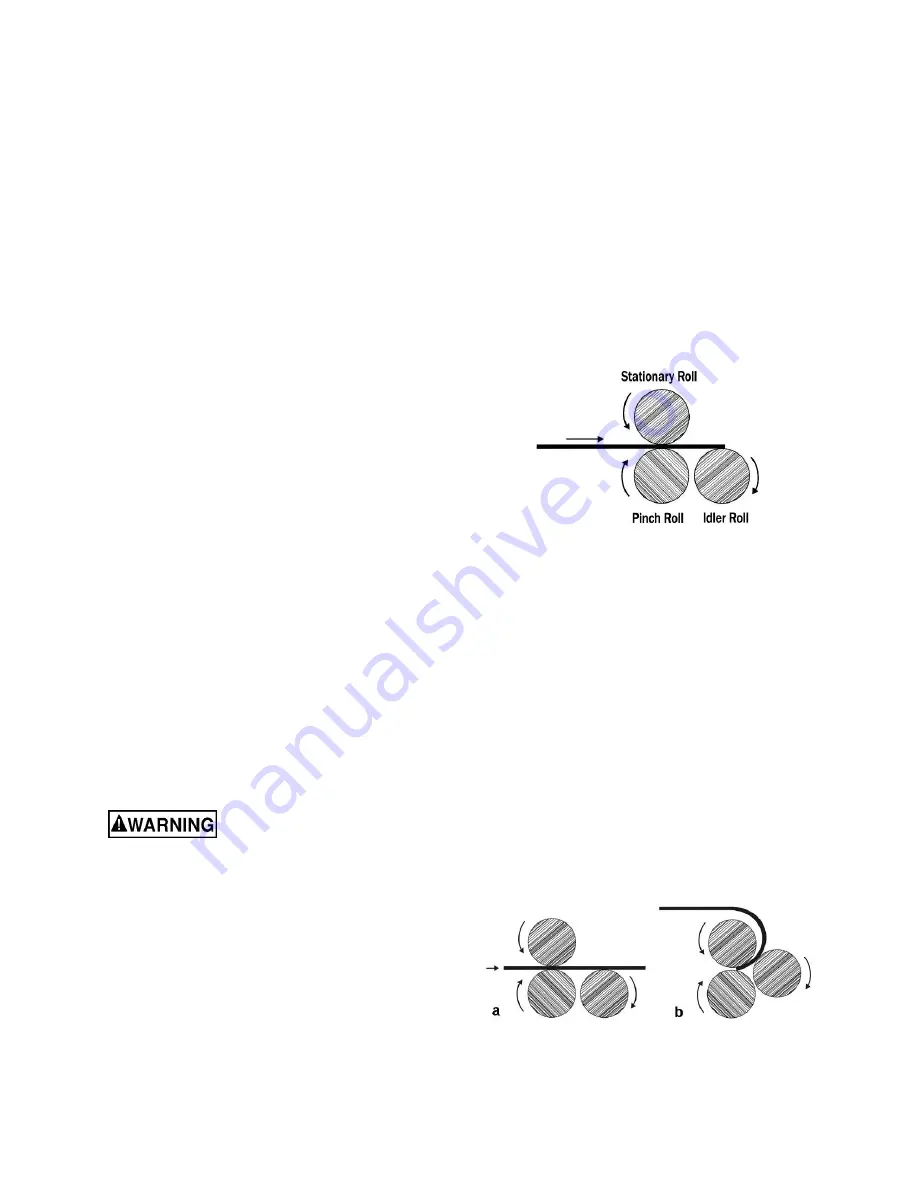
9
9.2
Roll adjustment
(Figure 5-1 identifies machine elements.)
The front handwheel raises or lowers the pinch roll
(counterclockwise to raise), so that the correct gap
between stationary and pinch rolls may be obtained
to feed the stock into the machine.
The rear handwheel raises or lowers the idler roll
(clockwise to raise) which determines degree of
bend in the stock that is being fed through the
machine. A scale near the rear handwheel will aid
the operator.
To adjust rolls for material thickness:
1. Insert material between the rolls from front of
machine, and raise pinch roll until material fits
tightly.
2. Raise idler roll to desired position for bend.
No exact formula can be followed when making
these roll adjustments because material "spring
back" varies with the kind of material being formed.
Only by test forming several pieces can the correct
adjustments be obtained. Also, keep in mind that it
is much easier to re-pass material to make a smaller
radius than it is to attempt to increase a radius that
was made too small.
Rolls must be adjusted exactly parallel or the
material will spiral during the rolling process. The
gearing and transmission shafts on the EPR-1460
ensure parallel movement as the handwheels are
rotated.
NOTE: Deliberately setting rolls non-parallel is done
to make cone shapes (see
sect. 10.6)
. If rolls have
been adjusted for cone forming, check gap between
rollers with calipers, and reset them to parallel.
The stationary, or top, roll is secured at its left end
with a screw and jam nut (see Figure 1). These have
been positioned by the manufacturer, but can be
adjusted if needed.
10.0
Forming the workpiece
The rolls present a pinch point
and/or crush hazard. Do not place hands in
close proximity to rolls while operating.
10.1
Material size considerations
To determine approximate length of material
needed for a desired size tube, use the following
formula:
D
C
π
=
where
C
is the circumference,
π
equals 3.1417
and
D
is the diameter.
For example: To find length of material needed (
C
)
to form a tube 4" in diameter, multiply 3.1417 by 4".
Result: 12.5667" is the circumference of
approximate length of material needed. Cut several
pieces of material to this length for a forming test
run. Material may have to be lengthened or
shortened depending upon results of the test run.
If workpiece is large, make sure it receives proper
support as it exits machine.
10.2
Flat rolling
Softer metals (copper, aluminum, etc.) can be
processed through the machine to straighten,
flatten, or reduce their thickness. Simply adjust
pinch roll for thickness, lower idler roll to same
height as pinch roll, and feed workpiece through
(Figure 10-1).
Figure 10-1
10.3
Forming a radius
1. Adjust pinch roll as needed (see
sect. 10.6
).
2. Turn on machine and insert workpiece from the
front. Make sure stationary roll is rotating
counterclockwise.
3. When material reaches the point where the
radius is to begin (Figure 10-2), stop machine
and raise idler roll to achieve desired bend.
4. Restart rolls and continue until bend is
completed (Figure 10-2). Support workpiece as
it exits machine.
5. If a smaller radius is needed, adjust idler roll
distance and re-feed workpiece.
Figure 10-2




















